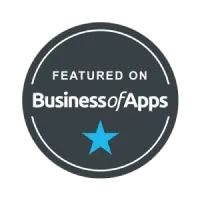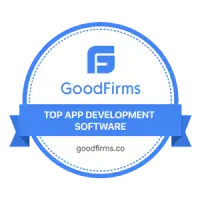- Home
- Our Services
- Mobile App Development
- Full Stack Development
- PHP Development
- eCommerce & CMS Development
- UI/UX & Design Services
Mobile App Developer
Full Stack Development
PHP Development
eCommerce & CMS Development
UI/UX & Design Services
Awards & Recognition






750+
Completed Projects features
20+
Professionals
8+
Years of Experience
- Portfolio
- About Us
Create disruptive business innovations through high-end creativity and world-class alliances.
or call us at
Vacancies for skilled developers and designers are available at all times!
- Hire us

Hire Mobile App Developers

Hire eCommerce & CMS Developers

On-Time Delivery

100% Transparency

One-to-one Communication

Engagement Models
Empower Your Business with Dedicated Developers - Blog
- ITS Training
Graphics Design

250+
Students Trained

8+
Course

150+
Students Placement

20+
Placement Partners
Pick The Right Course To Build Your Career
Top Reasons to Choose Flutter in 2024: Dive into the Latest Features & Benefits
By:
ITS
Category:
Flutter app Development
Introduction:
For developers, it is essential to keep up-to-date with the latest advancements. That’s why we have highlighted significant Flutter updates addressing what has been improved. These include increased performance through the CanvasKit renderer, enhanced app development thanks to updated Dart DevTools, and exciting plans for desktop support, all designed to improve your coding experience.
Key Takeaways
- Flutter’s Dart DevTools has undergone significant enhancements, including improved iOS support with Metal integration and new network and in-app purchase debugging tools, leading to a more efficient app development and debugging process.
- Flutter for web development has advanced with the introduction of the CanvasKit renderer for high-quality graphics and animations, alongside robust accessibility enhancements, ensuring apps are inclusive and available to a wider audience.
- The Flutter ecosystem is rapidly growing with an array of new packages and plugins like the Google Mobile Ads SDK and Firebase Extended Libraries, empowering developers with additional functionalities and aiding in-app monetization and integration.
Enhanced Dart DevTools
Flutter’s Dart DevTools has experienced exciting enhancements, elevating the app development experience. These enhancements include improved type promotion, interop capabilities, and overall debugging and performance tools. Introducing features like extensions, a new ‘Home’ screen, and various improvements have made the development and debugging process smoother.
iOS support improvements have revolutionized Dart DevTools. Adding the ‘Enhance Tracing’ feature empowers developers to diagnose UI jank issues and track down performance issues related to Build, Layout, and Paint operations on mobile devices. This leads to enhanced web app performance and a more fulfilling developer experience.
Improved iOS support
Dart DevTools now offers improved iOS support, resulting in significant performance gains on iOS devices. This can be attributed to the addition of metal support, leading to speeds up to 50% faster. Build times have been reduced, and developers can utilize Apple’s Spell-checking feature for editable text fields.
These enhancements are making a noticeable impact not just on mobile app development but also on web apps.
The upgrades specifically cater towards IOS users with extensive compatibility with IOS14 and new navigation options available within Dart DevTools’ features, such as request-modifying interceptors, which improve error handling processes and provide the ability for cancellation of requests.
Thanks to these advancements in enhanced iOS support from Dart DevTools, both mobile application and general app development have become more efficient and effective. These updates offer greater capabilities, allowing an enriched experience for developers during their creation process regardless if it is aimed at developing solely a single platform or multiple platforms, including web-based applications alongside specific targeting designs per device found among most modern iterations, henceforth creating great quality experiences that reflect precisely what one intends when designing around consumer needs while increasing convenience overall through optimization measures enabled by services like Mobile Application Development Integration (MADI).
New Features in Flutter for Web Development
Remarkable new features have emerged in Flutter web development capabilities. One of the most significant is the CanvasKit renderer, a version of Skia converted to WebAssembly, which allows Flutter to render in WebGL. This is particularly beneficial for mobile applications built with Flutter, especially on lower-end devices and when handling complex UIs and animations.
Another significant upgrade is the increased focus on accessibility. Flutter has introduced new enhancements to ensure mobile apps are more accessible for people with disabilities. Incorporating these enhancements means that web apps built with Flutter are accessible to a wider audience, including those who rely on assistive technologies.
CanvasKit renderer
In the world of Flutter web development, one powerful tool at the disposal of mobile app developers is the CanvasKit renderer. This versatile rendering option combines various elements such as HTML, CSS, Canvas and SVG to create high-quality web apps with a smaller download size compared to other rendering options. It’s particularly beneficial for those in Android development looking to develop top-notch mobile apps using Flutter.
The key strength of the CanvasKit renderer lies in its use of WebGL, an advanced graphics API that executes SKIA paint commands incredibly fast. As a result, it significantly enhances performance on lower-end devices, which can often struggle with complex animations or visuals.
While there are many advantages to incorporating this renderer into your project, there are also some challenges worth considering beforehand. These include potential issues with text layout fidelity and overall lower performance compared to alternative options available within the Flutter framework, making it less suitable for certain types of projects like ones focused heavily on detailed graphical representation or demanding smooth user experience across all device configurations.
Despite these limitations, however, mobile app creators shouldn’t overlook what makes this particular choice unique, especially when focusing solely on creating sophisticated graphic interface applications intended mainly towards optimum animation content utilization platform capabilities used by the majority people viewing products developed specifically designed earlier versions only needed minor improvements so minimum impact presented constraint outlaid increased risk undesirable consequences highly likely problem determination procedures deliberately compatible implementation flaws detected without wasting precious resources actively researching root causes underlying defect severity levels suggest corrective remediation measures accordingly comparable instances meticulous hands-on software testing manifest tier environments lead successful release finish line arrived eventually leading final product aligned latest industry standards provides support essential home client satisfaction.
Accessibility enhancements
Flutter’s latest updates for accessibility demonstrate their dedication to creating a more inclusive user experience. This includes implementing changes in the UI, providing alternative text descriptions for images, considering individuals with dyslexia and color blindness, improving screen reader support, and enhancing search functionality.
These enhancements are crucial in ensuring everyone can effectively use Flutter app, regardless of any disabilities they may have, by incorporating features such as TalkBack and VoiceOver into their platform design process. Visually impaired users now have access to spoken feedback on app contents – highlighting Flutter’s strong commitment towards accessibility measures that even outshines other frameworks available today.
As a result of these efforts towards inclusivity and usability enhancement through various means, including smoother navigation techniques, thanks largely due in part to quick installation times leading up to higher ratings & good reviews standing high positions like atop top spots within those pages found at both Google Play Store and just plain old “Google Play”.
Flutter DevTools Updates: Streamlining App Development
The continuous updates and enhancements in Flutter DevTools, such as the Network tab and In-app purchase inspector, are streamlining the app development process. With the release of versions 3.10 and 3.16, developers can benefit from various improvements, including Material 3 as the new default theme, a preview of Impeller for Android devices, and an option to add extensions to their DevTools.
One significant feature introduced is the Network tab, which equips developers with powerful tools to monitor network activity closely. They also can inspect requests made by their app and view detailed responses from servers while tracking performance metrics simultaneously.
This level of control enables optimized network performance, resulting in efficient integration during app development projects. A guided tutorial is now available on how to effectively navigate through the information presented within these tools found in official documentation provided by Flutter.
These latest upgrades serve as clear evidence highlighting Flutter’s ongoing commitment towards enhancing user experiences throughout all aspects related directly or indirectly to creating mobile applications efficiently without any compromise concerning quality standards set forth among its community members worldwide.
Network Tab
Flutter DevTools has a powerful Network tab feature that lets developers monitor and examine HTTP, HTTPS, or web socket traffic from their Dart or Flutter applications. It also offers useful tools like search, filter, and copy to analyze network activity thoroughly.
The Network tab displays all the app’s network requests, which helps identify potential performance problems related to network usage. Some users have encountered minor difficulties with this feature after updating to specific versions, such as empty responses and request tabs appearing. These issues are only seen in specific tool versions and may not affect every user.
In-app purchase inspector
The In-app purchase inspector within Flutter DevTools is a valuable resource for developers seeking to test and debug in-app purchases. With just a click on any widget, the developer can easily navigate through the widget tree, making inspection more efficient.
This tool serves several purposes.
- It helps identify and resolve common issues, such as performance problems that may cause UI frames to appear janky or stutter.
- It also aids in locating layout errors commonly found in the Flutter framework.
By incorporating this tool into their development process, developers can tackle these challenges effectively and streamline their overall workflow.
Expanding Ecosystem: New Packages and Plugins
The ever-growing collection of new packages and plugins for Flutter offers developers enhanced abilities. Some noteworthy additions to this ecosystem are the following: Freezed, flutter_launcher_icons, Fluttertoast, provider, url_launcher, google_fonts, and path_provider.
flutter_bloc, firebase_auth.
Among these expanding tools is also Google Mobile Ads SDK, which supports various ad formats and works effectively with both AdMob and Ad Manager. Moreover, Firebase Extended Libraries is another notable tool in this growing ecosystem, which enables access to a wide range of Firebase services for your apps developed on Flutter.
Google Mobile Ads SDK
The Flutter plugin, Google Mobile Ads SDK, allows developers to incorporate various ad types, such as banners, interstitials, native ads, and rewarded ads. This valuable tool is compatible with both AdMob and Ad Manager, which makes it ideal for monetizing apps developed using the Flutter framework. Following the official instructions on how to integrate the SDK into an app before displaying any ads from AdMob will surely result in increased revenue.
Although this potent addition may prove beneficial for developers working with the Flutter framework, they might face some compiling or runtime errors during the integration process. To ensure successful implementation and smooth operation of the SDK without any complications, carefully adhering to all steps outlined in the documentation, along with being prepared beforehand, can help mitigate potential issues that could arise.
Firebase Extended Libraries
Firebase Extended Libraries also referred to as FlutterFire, comprise a set of plugins seamlessly installable in Flutter, facilitating smooth integration of specific Firebase services. These distinct plugins provide tailored features and functionalities for each Firebase service, enhancing the development experience for Flutter developers.
These libraries provide excellent support for the development of apps by offering real-time functionality, cross-platform compatibility, and great user experience design control with no steep learning curve. They have multiple available plugins tailored towards different Firebase products like Cloud Firestore, Authentication or Realtime Database, making it simple to incorporate desired functionalities from these services into any project developed using Flutter.
Flutter for Desktop: What’s New and What’s Next
Recent progress in desktop support for Flutter is greatly transforming the world of app development. The stable version now available on Windows and upcoming features being developed for macOS and Linux are major breakthroughs within the realm of Flutter.
Feedback from users regarding Flutter’s availability on Windows has been overwhelmingly positive, serving as a testament to its success as a reliable release.
Stable release for Windows
The latest version of Flutter for Windows boasts impressive capabilities, including stable support for developing apps on the platform and cross-platform compatibility with macOS, Linux, and Windows. The recent release of Flutter 2.10 has empowered developers to design applications that can function seamlessly across any or all of these operating systems.
While some users have faced difficulties in finding suitable desktop packages for their needs within the framework, there is a wealth of resources available within the community that can aid in overcoming such challenges. With persistence and access to supportive communities, creating successful apps using Flutter remains achievable.
Community Contributions: Powering Flutter’s Growth
Open-source packages
When it comes to Flutter development , open-source packages offer a wide range of pre-built widgets, tools and utilities such as Inkino, Flutter Music Player, Invoice Ninja, and Twitter.
Natrium, Timecop and Open Food Facts. These resources not only enhance the features and user experience in this programming language but also streamline its development process through code reuse for faster progress.
Integrating these packages into their projects allows developers to tap into their powerful functionalities by simply adding them as dependencies. Moreover, in order to contribute, we must contribute. To the ecosystem of the Flutter community, some members can create additional open-source packages using the ‘flutter create’ command along with the ‘-template=package’ flag.
Through efficient use of these available resources, the overall improvement in feature enhancement and user interface can be seen in this coding environment. Additionally, this practice promotes collaboration within the Flutter community, where each member contributes towards creating more versatile solutions by sharing their skills and knowledge. Attracting new users while retaining current ones is what makes open-source libraries an invaluable asset for any developing platform.
Learning resources
The Flutter developers community has compiled various valuable learning resources, including tutorials, documentation, cookbooks, blog posts and online communities. These resources are essential for those looking to increase their knowledge and stay updated on the latest trends in iOS app development while creating their own apps.
There is an abundance of opportunities provided by the Flutter community for individuals seeking to learn more about this platform. Some recommendations include utilizing “Flutter Apprentice,” attending sessions and workshops at the Google IO 2021 conference, exploring state management techniques using Riverpod or Provider libraries, and participating in workshops/trainings offered by 10 Pearls University.
By taking advantage of these available resources, the journey towards mastering Flutter can be greatly accelerated for developers interested in iOS app development.
Summary
To sum up, the most recent developments in Flutter are significantly transforming the world of app development. The updates to Dart DevTools, the addition of the CanvasKit renderer, and improvements in accessibility have all brought about a major shift for developers. With new features like the Network tab and In-app purchase inspector now available on Flutter DevTools, app creation and debugging have become more efficient. Furthermore, the ever-growing range of packages and plugins coupled with stable versions for Windows (already released), as well as upcoming releases for macOS and Linux, guarantees even better capabilities moving forward. The community’s contributions also play an important role in driving growth within Flutter.

Join them by using our services and grow your business.

“At Inspire Techno Solution , our mission is to continuously innovate the best ways to train the next generation of developers and to transform the way tech education is delivered.”
Related Blogs
Top Reasons to Choose Flutter in 2024: Dive into the Latest Features & Benefits
As we step into 2024, Flutter emerges as a powerhouse, offering developers a cutting-edge toolkit
15 Flutter development tips and tricks every Flutter Developer Must know
Flutter has risen to prominence as a favored framework, renowned for its ability to craft
Accessibility in Flutter: Building Inclusive Mobile Apps
Creating mobile apps that are universally accessible can sometimes feel like climbing a mountain –
